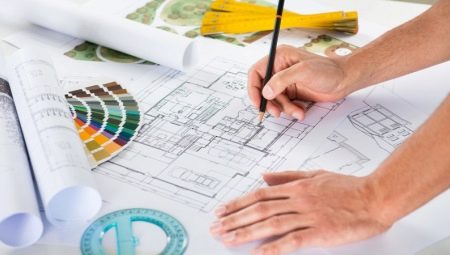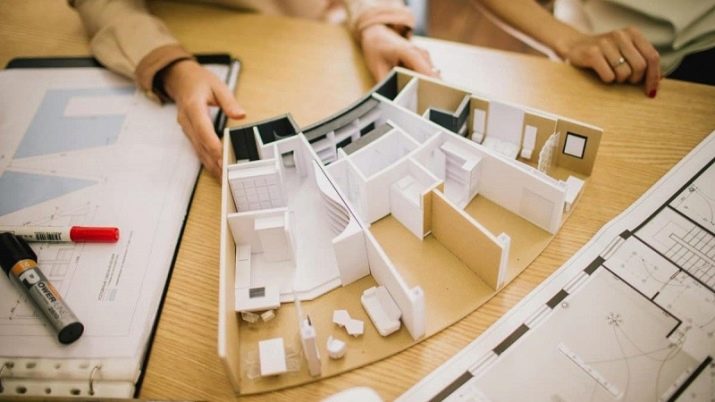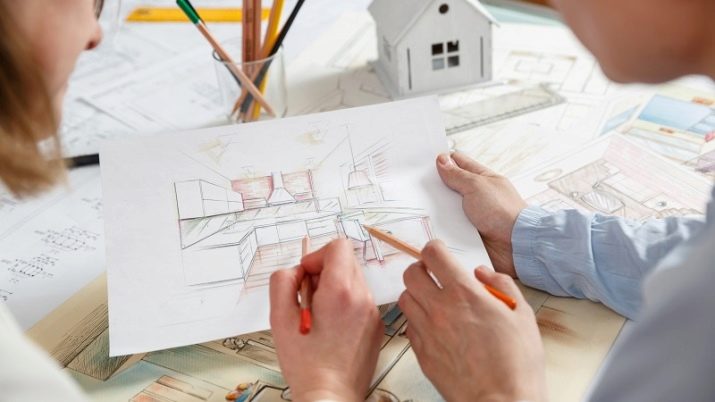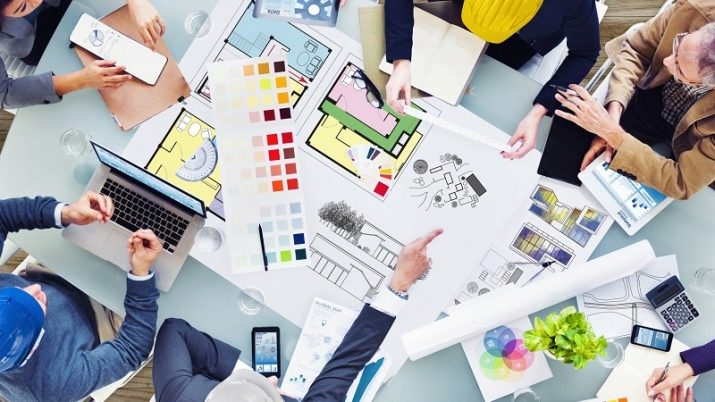Architect-designer: description of the profession and training

Anyone who is going to choose a career path should study the description of the profession of an architect-designer. It is creative in nature, but you will definitely have to master a lot of subtleties and nuances. They relate to training, and the necessary knowledge, and subsequent employment.
Description of the profession
To understand what is the essence of the work of an architect-designer, it is necessary to first imagine the features of the two components of such a profession. "Clean" designers work on the aesthetic aspects and appearance of all kinds of objects. Individual designers work with large-scale tasks - for example, they equip the infrastructure of the city.

The decisive reference point is the technical aesthetic requirements, usually developed within the industry community.
Architects are engaged in matters that are much more mundane, more closely related to technology and engineering issues. A good architect is always ready to deal with construction design or takes into account ready-made plans for buildings and residential complexes. A the architect-designer takes into account the peculiarities of both the aesthetic architectural environment and architecture in the "physical" sense. He will have to work equally often with drawings and sketches, floor plans and 3D design models. At the same time, it will be necessary to constantly seek a balance between external beauty, cost and efficiency of projects.
It is obvious that the profession of an architect-designer will become a real find for those who cannot unambiguously prefer the humanitarian or technical direction... Or for those who wish to combine a mathematical mindset and creative quest.We will have to develop spatial thinking (its initial level is almost always not enough). A good specialist is constantly looking for new schemes and approaches, trying to improve his overall level.
It is also advisable to study urbanism in order not to design a separate building in isolation from other objects.

Education
Future architects and designers will have to enroll in relatively few universities that train specialists in this new profession. Upon admission, you will have to take items of this kind:
- literature;
- history;
- drawing, composition and drawing.
You will also need to study complex subjects, for example, the strength of materials or the features of the calculation of structures. Therefore, in this profession there is nothing to do for those who only wish to draw and bring original pictures to life. In the process of preparation, you need to master the technique of working out architectural and design ideas in the design of cities and other settlements. A specialist will have to study the preparation of the interior of individual rooms and figure out how the natural environment affects all this. Already at the training stage, you often have to work on:
- public and industrial facilities;
- common space of cities and towns;
- garden and park ensembles.

You need to know how to find the best color and light solution in a village. Since the work is carried out to order, in the course of training, each time with such a task, several options are prepared. A feature of the profession is the ability to choose the optimal materials, structures and their connections. Optimal in terms of price, comfort, design characteristics and lighting organization. Architects-designers are also taught:
- conducting economic evaluations of projects and monitoring changes in their cost;
- design and restoration work in historical buildings;
- coordination of facilities with customers and state controllers;
- conducting architectural supervision;
- the ability to combine traditional and ultra-modern materials;
- preparation of furniture for individual orders;
- communicating their ideas to subordinates.
In our country, specialization "Design of Architectural Environment" is available in 31 higher educational institutions. But applicants do not go there too willingly. The reasons are not only the complexity of training and subsequent work, but also in the relatively low (in relation to competencies) level of wages.
Abroad, the quality of education is higher. And the likelihood of employment is much greater, especially if you choose training in Milan - a recognized center of the industry.

Where can you work?
Architects-designers can find a place for themselves not only in private organizations, but also in public institutions. They are awaited by architectural bureaus, art studios, furniture factories and design bureaus, large companies for the renovation of premises. A lot depends on how the portfolio is put together. It usually contains information about working on the interiors of residential and office buildings. It is also desirable to show:
- the layout of the premises;
- the art of decorating space;
- developments in the field of navigation systems and urban facilities;
- the ability to carry out restoration work;
- the ability to present their achievements at exhibitions.

Requirements
Skills and knowledge
A good architect-designer works on a project entirely. And at the same time, he does not lose sight of even small details. It is imperative to master the solution of both creative and purely technological problems.... A professional must understand how what works and how people will behave. For him, the unforgivable mistake of "just making a good design."
The most beautiful execution of a house wall, for example, does not justify its unreliability or insufficient degree of thermal insulation. People may like the beautiful decoration of the courtyard, but it should not interfere with the passage of people, the passage of cars, the operation and repair of technical communications.The architectural environment designer develops the concept from scratch and develops it taking into account the main industry requirements. In the process, you will have to create intermediate visualizations in two-dimensional and three-dimensional execution. The same specialist thinks over how best to make engineering complexes and auxiliary equipment.
A good architect-designer is personally responsible for the selection of suitable materials and structures. He also takes into account what kind of lighting should be in a particular place and decides how to do everything conveniently and comfortably, taking into account the transport accessibility of the residential complex. A similar complex of tasks is solved with the help of knowledge in the field of:
- coloristics;
- architectural modeling;
- ergonomics;
- general and architectural physics;
- communal services;
- ecology;
- psychology;
- design theory.

Personal qualities
Both in the architectural and especially in the design part of the profession, it is important to be able to create. Already at the time of admission to the university, they everywhere require beautiful drawing and the ability to draw line drawings with a pencil. And you don't just need to redraw a photograph, a still from a film, or a landscape from a painting. Architects-designers (as well as simply architects or designers) are obliged to find non-standard moments in the most ordinary things. After processing them in your head, you need to competently transfer them to paper - not oversimplifying and not being "wise".
Undoubtedly, an obligatory feature of an architect-designer is responsibility and attentiveness... The mistake of such a specialist threatens not only the loss of money and material resources, but also damage to the reputation of the company and even human casualties. Perseverance is no less important. Only those who know how to finalize the project to the ideal state within the allotted time will be able to achieve success. Already during their studies, students of the architectural department are busy in the same mode in which others are only at sessions and final exams.
But diligence, strong-willed qualities, endurance and self-discipline are not enough. Be sure to be able to manage your time. Those who "drive" themselves - harm health and everyday life. And the "sleepless zombie" is unlikely to make a good project. Another important point - resourcefulness, because sometimes it is required to solve a problem gracefully and in a short time. An architect-designer always has excellent taste and knows how to create harmony even in the most difficult situation. He also always pays attention to everything unusual that he meets in life, to any beautiful thing or landscape, being able to apply this impression in practice. It is also desirable to have:
- excellent memory;
- broad outlook;
- sociability;
- the skill of tactfully communicating with other people;
- the skill of quickly generating ideas;
- deductive ability (application of general principles in a specific situation);
- inductive abilities (generalization of particular facts);
- the skill of communicating information about your intentions;
- the skill of detecting problems at the earliest stage;
- the ability to quickly switch between different tasks.









